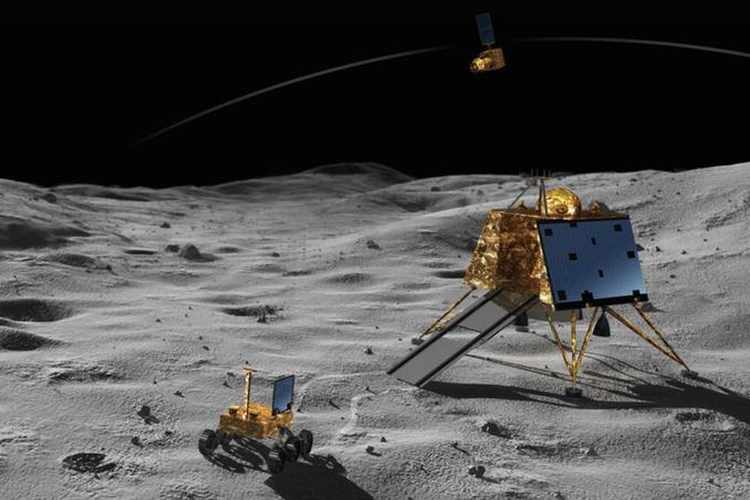India confirms another mission to the lunar south pole, months after Chandrayaan-2 crash-landed on the moon’s surface.
The Indian Space Research Organization (ISRO) historic mission to visit the moon’s south pole ended abruptly last September, when the Chandrayaan-2 spacecraft crash-landed due to a braking error. However, the unfortunate demise of the lander and rover has not deterred India from attempting another soft landing in the very near future. In a press briefing on Jan. 1 Kailasavadivoo Sivan, ISRO chief, confirmed a third lunar mission, Chandrayaan-3, had been given the go-ahead and that it could launch as early as this year.
According to a report by India Today, the Chandrayaan-3 mission will be much cheaper than Chandrayaan-2 at a total cost of 615 crore (~$86 million). Chandrayaan-2 racked up a 960 crore (~$134 million) bill. The new mission will feature a rover and lander and will attempt to land at the same location as Chandrayaan-2 — the previously unexplored south pole, where vast water deposits have previously been detected by orbiting satellites, including India’s Chandrayaan-1.
Jitendra Singh, minister for India’s department of space, suggested Chandrayaan-3 would launch in 2020, but Sivan noted that the mission’s launch date could “spill over” into 2021. Sivan also made note of the failed Chandrayaan-2 landing, again reiterating the fine braking phase did not occur as planned, preventing the lander from reducing its velocity and ultimately resulting in its destruction.
Chandrayaan-2 was launched on July 22, 2019 and consisted of three spacecraft: a lunar orbiter, a lunar lander and a rover. Though the lander and rover were lost during the crash landing, the orbiter remains in operation around the moon and is expected to continue surveying Earth’s closest celestial neighbor for another seven years.













![Hotstar Premium Cookies 2019 [*100% Working & Daily Updated*] Hotstar Premium Cookies 2019 [*100% Working & Daily Updated*]](https://tahav.com/wp-content/uploads/2019/11/Hotstar-Premium-Cookies-Free-100x70.jpg)



